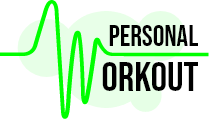Is salt more valuable than gold?
Yes, but it depends on which kind and how much…
Salt is absolutely essential for our organism and contains important minerals that ensure the smooth functioning of our body. Of course, this depends very much on the amount we consume. It should not be too little, but also not too much. But what is optimal?
WHAT THE WHO SAYS
The WHO recommends 5g per day (2300 mg sodium/day), which is about one teaspoon. In reality, our salt intake is much higher. The estimated world average is 9-12g per day (3600 – 4800 mg sodium/day), but some researchers estimate an intake of up to 16g per day!
Salt consumption in Switzerland
The 2011 study by Chappuis et al. with almost 1500 respondents provides a good overview. The amount of salt excreted in the urine was measured. The result was far from ideal. Only 21.6% of women and 6% of men had salt levels within the recommended range of 5g per day, regardless of age. The average salt excretion was 9.1 g per day, which was 7.8 g per day for women and 10.6 g per day for men.
Which salt is best?
Not only the amount, but also the type of salt is an important factor when choosing and consuming salt. The basic types of salt are table salt, sea salt and rock salt. There are significant differences between these types of salt in terms of production process, origin, texture and taste.
1. Table Salt
Table salt, the chemical compound sodium chloride, is obtained from underground salt deposits into which water is pumped. This salt solution is brought to the surface and undergoes a specific production process. It is chemically purified to obtain the purest white salt possible. All other minerals are removed. During this refining process, table salt is exposed to high temperatures of 1200 Fahrenheit (about 650° Celsius), which damages the structure of the substance.
This process also removes iodine, which is then added artificially. Table salt is 97.5% sodium chloride. The rest is made up of other substances such as iodine or moisture absorbers (table salt contains only 2 or 3 mineral elements).
More than 60% of this salt, also known as “vacuum salt”, is used in the chemical industry, which is why it must be particularly pure.
2. Sea salt
Unlike table salt, sea salt is obtained from the sea or salt lakes through an evaporation process. This means that sea salt is not refined, but remains after the water has evaporated. The crystallized sodium chloride is then skimmed off mechanically or by hand. As a result, sea salt contains not only iodine, but also about 80 other minerals such as magnesium, potassium and calcium. These mineral salts and electrolytes are key players in the production of enzymes, but are also crucial for the proper functioning of the immune system, adrenal glands and thyroid gland. On the other hand, sea salt can also contain traces of heavy metals from polluted seas.
3. Rock salt
Himalayan salt, which is over 250 million years old, is often cited as an example. This salt is the cleanest source of sodium chloride and contains no possible toxins. Like sea salt, rock salt contains more than 80 minerals that are beneficial to the human body. The color of the salt is also related to this. In Himalayan salt, but also in other natural crystalline salts, the color is the reason and proof of the presence of a wide spectrum of minerals (in this example: pink color = more iron). Because of the ionized, colloidal structure of Himalayan salt, all minerals and trace elements can be absorbed by the human body.
When the right amount of salt is present in our bodies, it performs many vital functions:
Salt is essential for regulating blood pressure, removing excess acid from the body, maintaining stable blood sugar levels, and preventing muscle cramps. These are just a few. On the other hand, too much consumption can have negative consequences. It raises blood pressure, which is associated with an increased risk of cardiovascular disease. It also increases the likelihood of kidney, stomach, gallbladder, and other organ disease.
Does this sound like it’s incredibly difficult to eat the right amount of salt? Not really! You just need to eat a balanced diet: Eat less industrially processed food, which is where about 75-80% of your salt intake comes from! Instead, eat fresh foods with good sources of protein (quality meat and fish, dairy products, eggs, legumes), vegetables, fruits and carbohydrates (rice, potatoes, whole grains).
One last tip!
Drink a mixture of the following three ingredients every morning:
- 1 Glass of water
- 1/4 Teaspoon Himalayan salt (or other natural, unrefined salt)
- Natural lime juice
It gives you an energetic start to the day and provides your body with important minerals and other necessary substances. Among other things (see above), Himalayan salt affects the function of the adrenal glands, which produce many important hormones (epinephrine, norepinephrine, cortisol). Stress, for example, is linked to the hormone cortisol and therefore directly to our energy levels. Lemon juice balances the PH level at night because it is metabolized in an alkaline way. During the night, the pH drops due to the work of the liver (biotransformation), which requires an acidic environment. In addition, water hydrates the body after the nightly drinking break!
For more valuable nutrition information, click here (GERMAN). In our Kitchen Workout cookbook (GERMAN) you will also find many tasty and healthy recipes that are easy to prepare.
Give them a try! Cheers to you!
Written by Adéla Rathovà, thank you!
Do you want professional and, above all, practical support for lifestyle and nutrition? Then you’ve come to the right place. The personal trainers at Personalworkout will help you finally achieve your goal, with a success guarantee.
SOURCES
- ARYA, J. (2014): Food is your Medicine
- BAG (2013): Salt strategy for 2013-2016
- CHAPPUIS, A. et al. (2011): Swiss survey on salt intake: main results
- DRAKE, L., S., DRAKE, M., A. (2010): Comparation of salty taste and time intensity of sea and land salts from around the world
- EKMEKCIOGLU, C., BLASCCHE, G., DORNER, T., E. (2013): Too much salt and how we can get rid of it
- MERRELL, A. (2016): Eat Smart, Live Long: There Is No Diet That Can Do What Healthy Eating Can
- MULLER, F., M. (2005): Colloidal Minerals and Trace Elements: How to Restore the Body’s Natural Vitality
- YPSI (2017): Der Säure-Basen-Haushalt – Was wirklich wichtig ist
- YPSI (2016): Starte jeden Tag mit Himalayasalz und Limettensaft in Wasser
- WHO (2016): Salt Reduction
Challenge of the Month
What Clients Say





















